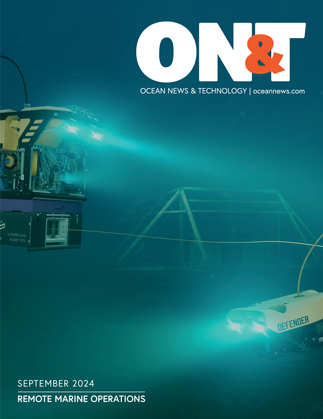On Sunday, August 30, teams from NOAA’s Monitor National Marine Sanctuary, in partnership with the U.S. Coast Guard and the Bureau of Ocean Energy Management, began a survey of the historic wreck of Diamond Shoal Lightship No. 71, the only American lightship to be sunk by enemy action during World War I.
The archaeological survey expedition off the coast of Beaufort, North Carolina, will document the wreck site, which was added to the National Register of Historic Places this month. Information from the survey also will be used to create educational exhibits and materials to help recreational divers better interpret the wreck site, which is managed by NOAA and the Coast Guard.
The sanctuary’s research vessel SRVx Sand Tiger will provide the platform for at-sea operations. Other partners for the project include East Carolina University and University of North Carolina Coastal Studies Institute.
Photo of Diamond Shoal Lightship No. 71 (Credit: NOAA)
Built in Bath, Maine, in 1897, the lightship, also known as LV-71, served as a floating lighthouse, sound signal station, and navigational beacon. For 21 years, the lightship marked the treacherous waters of Diamond Shoals off of North Carolina to ensure other vessels could navigate safely.
Side scan sonar image of LV-71(Credit: NOAA)
On August 6, 1918, the German submarine U-140 attacked the vessel while it was anchored off Cape Hatteras. Before it was attacked, LV-71 had reported by radio the presence of a submarine that had torpedoed the unarmed American steamer Merak. The U-140 intercepted the warning and headed for the LV-71. The submarine fired its deck guns at the lightship and first took out the communications room. As the U-140’s shelling continued, LV-71’s 12 member crew escaped off the doomed vessel. According to A History of U.S. Lightships by Willard Flint, more than 25 friendly vessels were warned away from the area by the LV-71.
“A large part of our country’s history is rooted in our maritime heritage,” said David Alberg, superintendent of the nearby Monitor National Marine Sanctuary. “This expedition will provide valuable insights into the lives of this heroic crew and shed light on an important chapter of our nation’s history that is unknown to many Americans.”
Managed by NOAA’s Office of National Marine Sanctuaries, the Monitor National Marine Sanctuary was designated in 1975 to protect the wreck of the famed Civil War ironclad USS Monitor, which sank during a storm 16 miles off Cape Hatteras, North Carolina in 1862.
